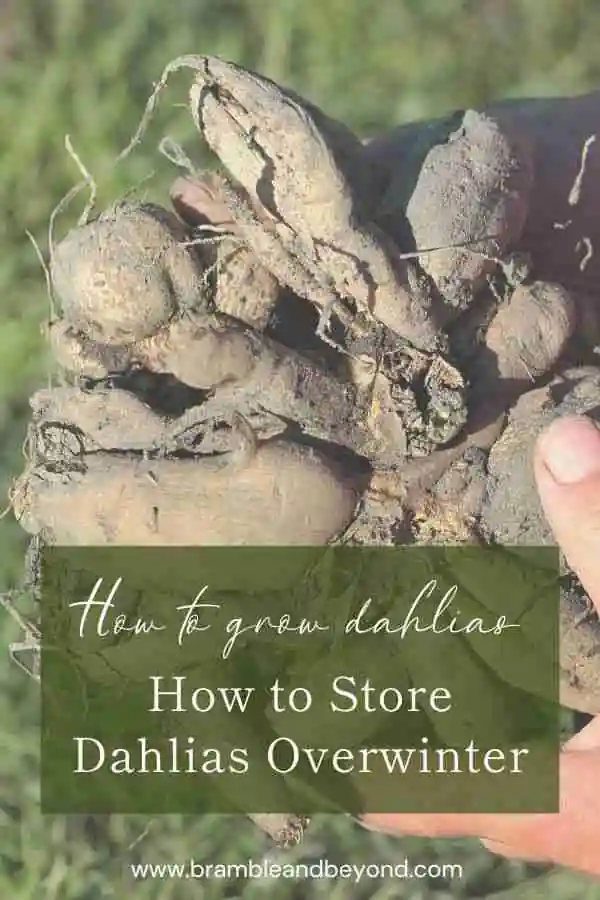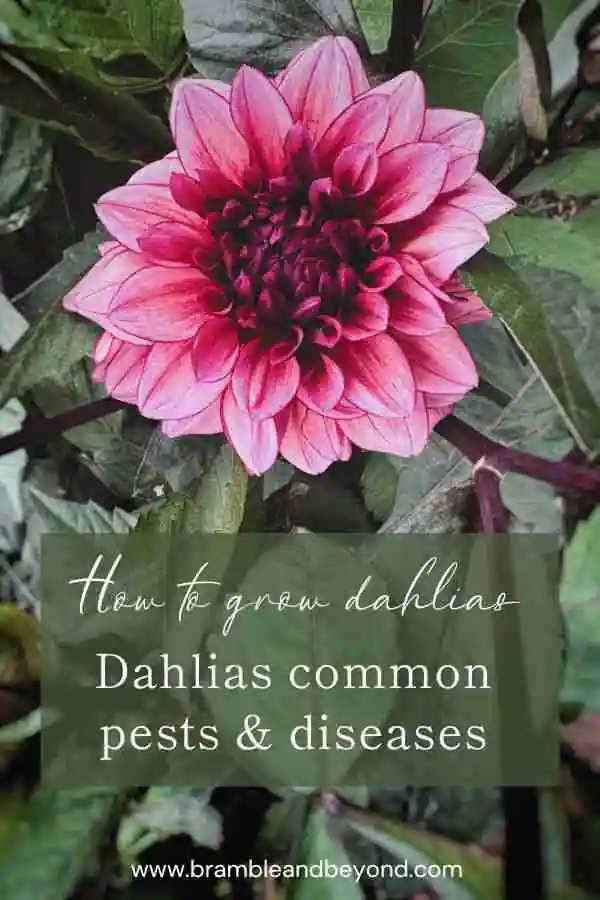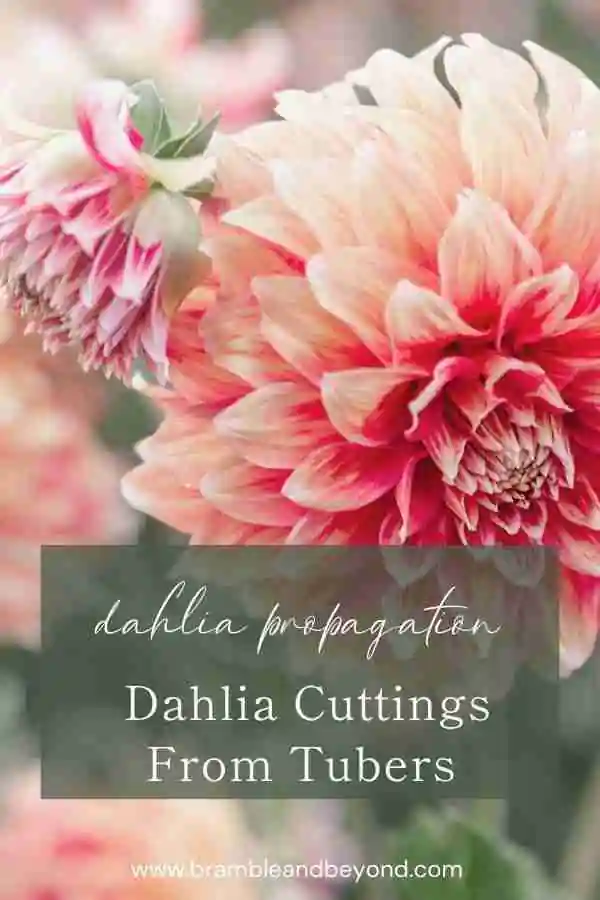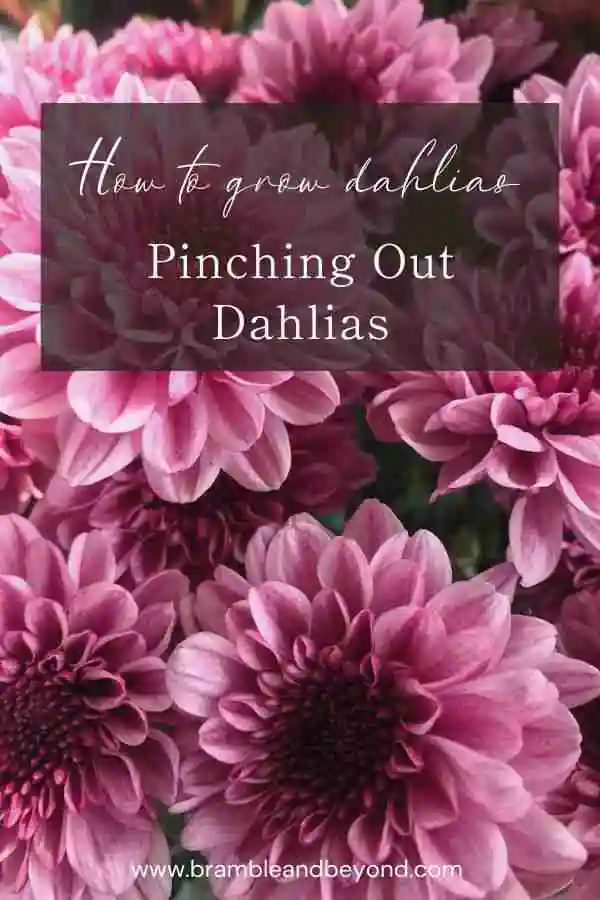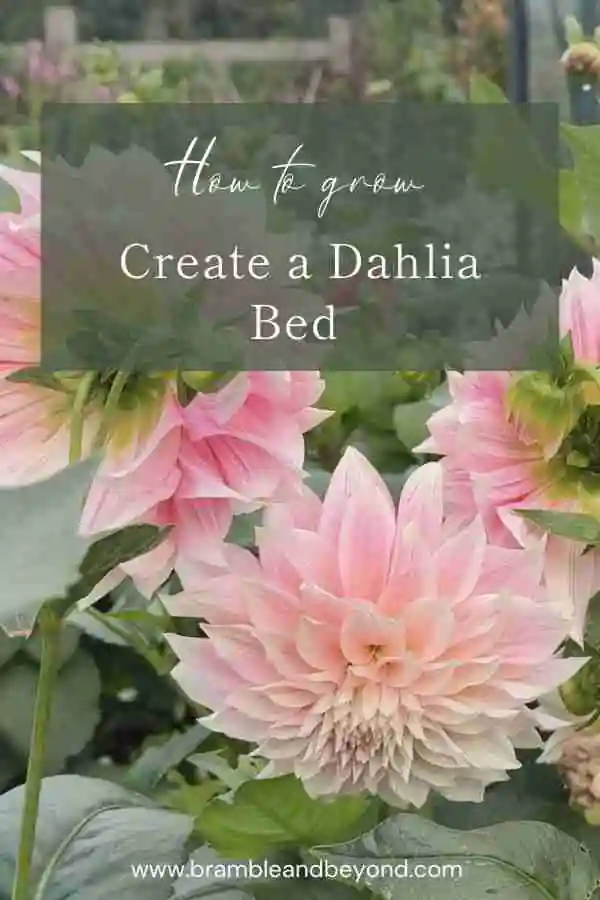Disclosure: This post may contain affiliate links, meaning I get commission if you decide to make a purchase through my links, at no cost to you. Please read my Affiliate Disclosure for more information.
Dahlias are the true stars of the late summer garden, with their vibrant colours, intricate shapes, and ability to keep blooming right through to the first frost.
If you’re anything like me, you’ve probably spent a good chunk of time admiring them, camera in hand, hoping to capture their beauty before a strong gust of wind does its worst. But did you know that with a few expert techniques, you can cut your dahlias in a way that not only keeps them looking fabulous in a vase but also encourages the plants to produce even more blooms?
Today, we’re diving into the art of dahlia pruning, focusing on how to cut these beauties for long stems, larger blooms, and stunning floral displays.
In general, to cut dahlias with long stems, prune them at a 45-degree angle when the blooms are fully open, removing side buds (disbudding) to focus energy on the main flower. Regular deadheading encourages the plant to produce more blooms throughout the season.
The Best Time for Dahlia Pruning and Harvesting
Let’s start with the basics: timing. When it comes to cutting dahlias, timing is everything. Cut them too early, and the blooms won’t reach their full potential. Wait too long, and they may already be past their prime. So, when exactly is the best time to prune and harvest your dahlias?
Identifying the Perfect Time
Dahlias should be cut when they’re fully open. This can be easier said than done depending on the style of your dahlia.
Unlike roses, dahlias don’t continue to open once they’ve been cut, so picking them at just the right moment is crucial. To identify the perfect time, look for flowers that are well-formed, with no signs of wilting or browning.
Generally speaking, when the outer petals start to curve back towards the stem, the flower heads are ready.
That said, you can pick whenever you think the flower looks perfect. I often pick some of the dinner plate dahlias (cafe au lait, penhill dark monarch) when they are not fully open. This makes the flower heads a bit more manageable to arrange in a vase, otherwise the flower heads can be quite heavy and overpower everything else.
Morning vs. Evening Cutting
The time of day you choose to cut your dahlias also plays a big role in how well they’ll perform in a vase. Early morning or late evening is best.
In the early morning, the plants are well-hydrated from the night and the cool temperatures help preserve the blooms. Similarly, late evening allows the flowers to recover from the heat of the day, making them less prone to wilting once they’re cut.
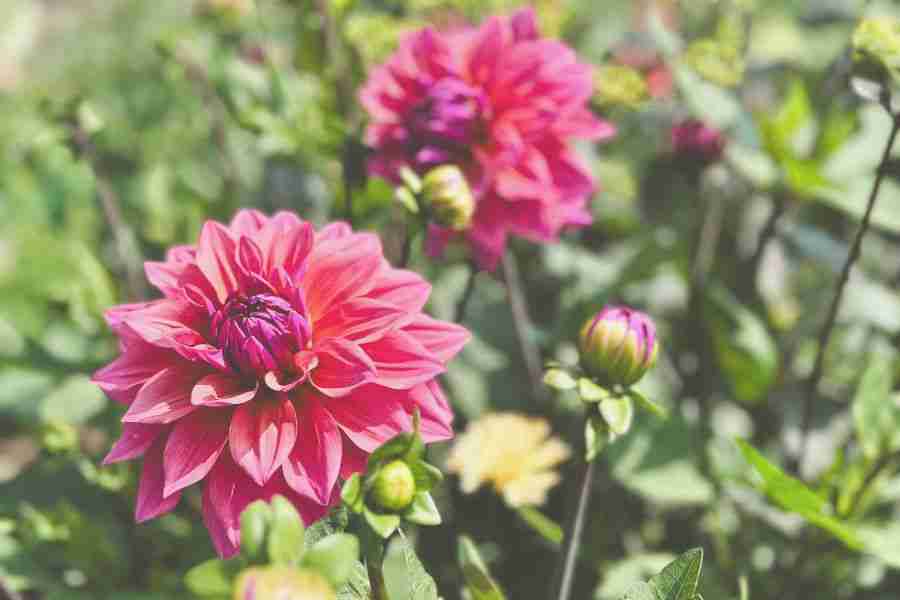
Essential Tools for Dahlia Pruning and Cutting
Now that we’ve nailed down the timing, let’s talk tools. Just as a chef wouldn’t dream of chopping onions with a blunt knife, you shouldn’t cut your dahlias with anything less than the proper gear. Using the right tools ensures clean cuts, reduces the risk of disease, and keeps your plants healthy and blooming.
Pruning Shears vs. Scissors
When it comes to cutting dahlias, a good pair of pruning shears or snips is your best friend. Unlike regular scissors, a good pair of florist snips, such as these fabulous Niwaki scissors are designed to make clean, precise cuts without crushing the stems. This is important because crushed stems can impede water uptake, leading to shorter vase life for your flowers.
When choosing pruning shears, look for a pair that feels comfortable in your hand and is sharp enough to cut through stems without a struggle. I have a similar pair to the Niwaki ones and they just don’t seem to blunt. They are always in my pocket so I have tendency to use them for everything (except really thick woody stems), and they just keep going. I’d be lost without them.
Caring for Your Tools
Keeping your tools clean and sharp is essential. After each use, wipe down your pruning shears with a damp cloth to remove any sap or dirt.
Every so often, give them a thorough cleaning with soapy water and a scrub brush, then dry them completely before storing them. If you want to take this to the next level then you can use the Niwaki tool cleaner. To protect your blades you can also coat the blades with camellia oil to protect them. You can put a few drops of oil onto a sponge and wipe it over the tools.
A little care goes a long way in extending the life of your tools and keeping your dahlias healthy.
Mastering the Technique: How to Prune Dahlias for Longer Stems
With your tools ready and the perfect time picked out, it’s time to dive into the actual process of dahlia pruning. The goal here is to achieve long stems and larger blooms, and the key to this is a technique called disbudding.
Understanding Disbudding
Disbudding is the practice of removing side buds on the dahlia plant, which allows the plant to direct more energy to the main bloom. This results in larger, more impressive flowers with longer stems—ideal for floral arrangements.
To disbud your dahlias, simply pinch off the smaller side buds that form next to the central bud. These side buds might be tempting to leave on, but removing them is supposed to make a difference in the size and quality of the central bloom. I’m not sure I have noticed that much of a difference, but it may depend on the style of dahlia.
Disbudding is a common practice if you are entering your dahlias into competitions. That said, I don’t always do this, as I am now drying a lot, so prefer more flowers where the stem length is not as important. Some variaties naturally have a long stem length, e.g. Sweet Nathalie, American Dawn and Caitlin’s Joy.
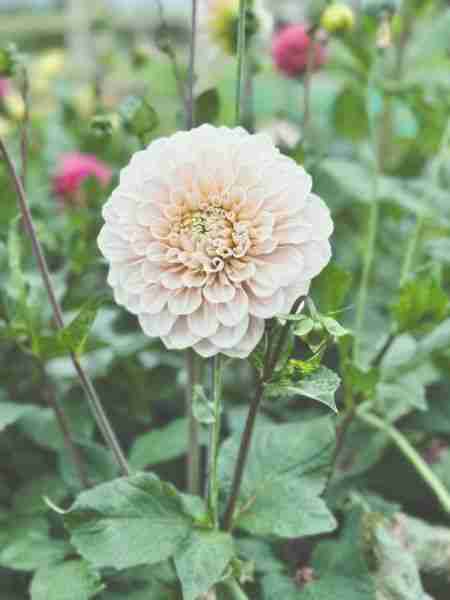
When you do cut your flowers, if you cut deep into the plant, this also encourages longer stems. So you can mix and match depending on your needs.
Cutting Angles and Stem Length
When cutting dahlias, the angle of your cut is just as important as the timing. Always cut the stem at a 45-degree angle. This increases the surface area of the cut, allowing the stem to take up more water and nutrients.
As for stem length, aim to cut your dahlias with stems that are at least 12 inches long. This not only gives you more flexibility when arranging them but also encourages the plant to produce longer stems in the future.
Deadheading vs. Pruning
It’s important to distinguish between deadheading and pruning. Deadheading is the removal of spent blooms to encourage more flowers, while pruning involves cutting fresh flowers for display.
When deadheading dahlias, remove the entire spent flower head, down to at least the first leaf node below the flower. This prevent the plant using energy to create seeds.
But how do you tell the difference between a dead head with no petals and a new bud? New buds and spent heads with no petals look remarkably similar. But there is a difference. New flower buds are more rounded, whereas a dead head is more pointed.
Post-Cutting Care: Ensuring Dahlias Last Longer Indoors
Now that you’ve successfully cut your dahlias, you’ll want to ensure they last as long as possible in a vase. Dahlias can be a bit finicky once cut, but with the right care, they can stay fresh and beautiful for several days.
Immediate Watering
The moment you cut your dahlias, place them in a bucket of lukewarm water. This helps to prevent air bubbles from forming in the stem, which can block water uptake and cause the flowers to wilt prematurely.
Let the stems sit in water for at least a few hours, or overnight, in a cool dark area before arranging them. This process, known as conditioning, allows the flowers to take in as much water as possible before being put on display.
Bringing the Beauty of Dahlias Indoors
There’s something incredibly satisfying about cutting flowers from your garden and bringing them indoors. It’s like capturing a little piece of summer and putting it on display. By mastering the art of dahlia pruning and cutting, you can enjoy these stunning flowers both in your garden and in your home for as long as possible.
When you take the time to learn how to care for your dahlias properly, you’re not just creating beautiful displays—you’re nurturing that love of gardening, allowing it to grow and flourish season after season.
So, go ahead, take these pro tips to heart, and let your dahlias shine. Whether you’re arranging them for a special occasion or simply brightening up your kitchen table, you’ll find that there’s nothing quite like the joy of bringing a bit of your garden indoors.
Tips for growing your dahlias
- Divide your dahlias: To produce good sized productive dahlia plants, it is a good idea to divide the tuber every few years. If the tuber is too large, then you get increasing amount of foliage and poorer quality blooms.
- Starting your dahlias: From March onwards you can start your dahlias tubers growing in pots in a protected growing space. The space doesn’t need to be heated, but it does need to have light and be protected from frost.
- Propagate your dahlias: Once your potted up dahlias start producing more than 5 new shoots you can take cuttings of any of the extra cuttings, to create new plants that will flower and create a tuber within this growing season.
- Pinch out shoots: Once you have stems that have a few sets of leaves, then pinch out the growing tip. This will encourage the plant to produce more lateral growth and flowering stems.
- Planting: When planting your dahlias, plant out the plants deep enough to cover the tuber. Place the tubers about 15cm (6 inches) deep. Space the tubers/plants about 40cm – 70cm apart. Only plant out once the risk of frost has passed. In the UK this is generally mid May.
- Watering: After planting, water them in well. After the initial watering, I prefer to water all my plants (if I need to water) with a long deep drink, rather than a light consistent watering. I think this encourages the plants to go in search of their own water, making them more drought tolerant.
- Provide support: Dahlias, especially tall varieties, will need staking or other support to prevent them from toppling over under the weight of their blooms. It is best to get this in place before you need it, rather than waiting until it is too late.
- Protect from pests: Avoid chemical pesticides in your dahlia bed. Instead, encourage beneficial insects, try companion planting, use physical barriers, or try homemade, eco-friendly sprays.
- Protect from frost: In the autumn, after the first frost, either cut back your dahlias and mulch heavily to protect the tubers over the winter. Or lift them and store them somewhere cool and dry overwinter.


